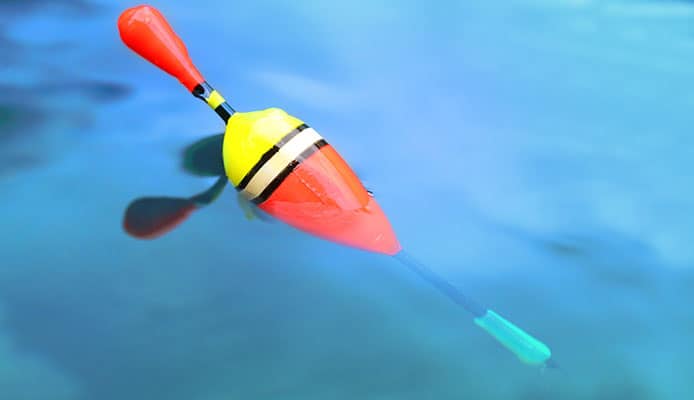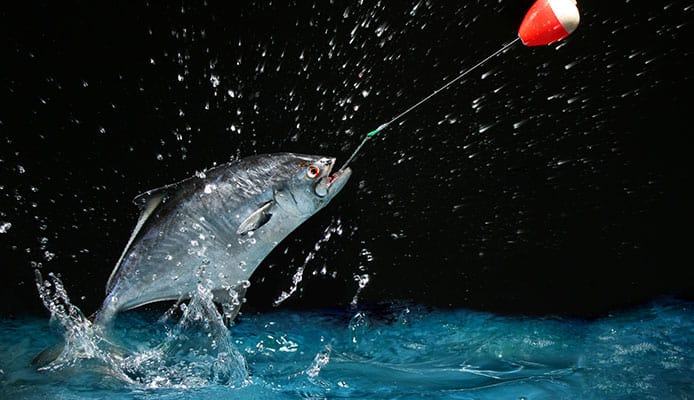
Plastic, clip-on bobbers are cheap and user-friendly, but in most instances, they are not enough. Despite its simplicity, this is not free of problems. For instance, some might not like how it limits casting. It is also not good if you are fishing at a depth of more than six feet. This is where the importance of slip bobber fishing enters the picture.
A slip bobber, at its most basic, is a float that slides up and down the fishing line. It is movable, which makes it different from a fixed bobber. It does not only indicate when a fish takes the bait, but it also helps in attracting more fish into your bait.
In the rest of this article, we’ll let you know how to use a slip bobber. It might seem intimidating at first, but once you know the right steps, you can do it easily! Read on and learn how to do it.
Benefits of Using a Slip Bobber
Before we discuss the specifics of how to use a slip bobber, let us first take a look at what makes it a better choice for increasing the chances that you will be able to reel in a catch.
Traditional bobbers have their drawbacks, which is why many people look for an alternative. One of the biggest issues is that its maximum depth is limited. Whether you are using a bass fishing rod or jigging rods, among others, the length of the rod is the same as the depth the traditional bobber handles. Fixed bobbers can also damage your fishing line and can cause limitations on the line you can reel.
All of these issues are addressed through slip bobber fishing. It allows you to fish effectively and efficiently, regardless of the depth of the water. You can also reel your fishing line all the way to the tackle. Plus, it does not damage your fishing line.
Rigging a Slip Bobber
Now that you know what exactly a slip bobber is, let us discuss how to use a slip bobber the right way. It is a bit more complicated compared to a fixed bobber, but it is nothing that you won’t be able to handle.
Here is a step-by-step guide on setting up your slip bobber to get ready for a fresh catch in your fishing cooler!
- The first thing you need to do is to attach a bobber stop, which will prevent the bobber from slipping throughout the fishing line. You can choose from different types of bobber stops to incorporate in your monofilament line or fluorocarbon fishing line. Aside from rubber stops, a knot stop is another traditional choice. See to it that the knot is large enough to prevent the bead from sliding but small enough so that it can pass through the rod guide.
- Now that you have set up the bobber stop, the next thing to do is to attach a bead with the right size. The bead has a hole in the center, which you will slide on the fishing line. This prevents drawing down the knot to the bobber once a fish takes it down. When there is no bead, the float will just slide past the stop.
- Once you are done with the bead, the next is the float. This is where you will attach your slip bobber. All that you have to do is to run the line through the slip bobber. There are different types of slip bobbers available. Whether you would like to catch trout, bass, walleye, or other types of fish, there is a bobber that is right for your needs.
- After attaching the slip bobber, add weight depending on the type of fishing line that you are using for the set-up. This is important as it is the component that pulls the fishing line to the bobber until it halts. Attaching too much weight will cause the bobber to sink. If it is too lightweight, on the other hand, it prevents sliding.
- To finish the setup of the rig, attach a hook. Read this fishing hook size guide to know which one is best for your needs. Aside from plain hooks, you can also use jigs.
You might also like: Perfect Bowfishing Bows
Tips and Tricks for Slip Bobber Fishing
One of the most important is to know where exactly you will set the bobber stop or the stop knot. This depends on the fish you would like to catch. For bluegill and crappie fishing, the bobber stop should be in a shallow position. On the other hand, for walleye fishing, it should only be about a few inches from the bottom.
If you want a simpler way to complete the stop knot, all that you need is a rubber band. You just have to tie the rubber band using an overhand knot around the line. This will be equally effective in preventing the bobber from sliding too much.
The right weight of the bobber is an issue that is open to debate. However, you will generally do better if you choose a larger bobber, which will cause it to sink on the water quicker.
The right rod is also a crucial consideration. Whether it is spinning rods or baitcasting rods, among others, the length is one of the most important considerations. Long rods are better if you want to cast the bobber farther from your boat.
Experiment with different baits and lures, as well as their presentation. While you can see plenty of guides online, do not take it as gospel truth. Take the time to use different lures in different positions and see if it works.
Globo Surf Overview
Especially for novice anglers, slip bobber fishing can be complicated. It is not as straightforward as using a fixed bobber, but with knowledge of the right steps, you can do it on your own. It takes only a few minutes. So, the next time you plan a fishing trip, learn how to use a slip bobber so that you can easily fish at any depth!


